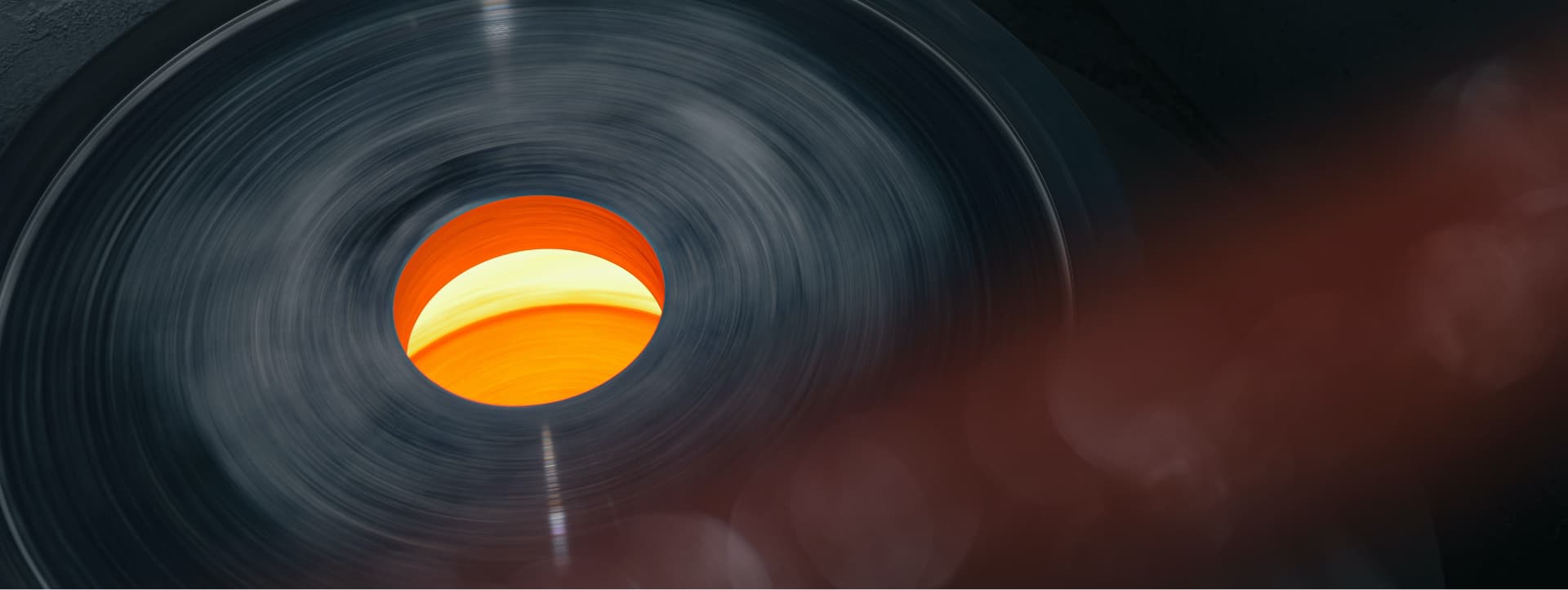 ">
">
 ">
">
The centrifugal casting process typically produces castings of symmetrically round hollow shapes (e.g. rings and cylinders). The nature of this dynamic casting process produces castings with a fine grain structure and a high degree of structural uniformity and integrity. These characteristics lead to a casting with higher mechanical strength than sand castings of the same alloy, as well as a structural high integrity which makes them a product of choice over more costly forged components.
During the centrifugal casting process, tightly controlled liquid metal is poured into a vertically or horizontally rotating metal die. Ordinarily, shapes with a large outside diameter (OD) are cast vertically; while tubular shapes whose length exceeds the OD, are manufactured in a die rotating about the horizontal axis.
Exceptionally high centrifugal (G) force is exerted on the liquid metal to mould it to the size and shape of the die. The centrifugal force refines the grain structure through rapid directional solidification by forcing heavier and more dense metal to the outside of the casting. The lighter, less dense oxides and dross are forced into the bore of the casting to be machined away once the casting is stripped from the die. This process creates purity and strength akin to open die forgings. Using these methods, Spunalloys can produce rings greater than 2000mm in diameter and tubes up to 5000mm in length.
All products are proof machined to within 3mm of finish sizes and most are finish machined by our in-house machine shops, as part of Westley Group’s fully vertically integrated manufacturing capability. This enables us to manage our customers’ risk through the complete supply of cast, heat treated, tested, machined and assembled castings.